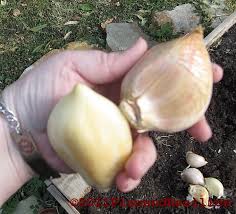
Scientists have discovered that many ulcers were caused by infection with the H. pylori bacteria — not spicy food or stress. Scientists do not know exactly how the H. pylori bacteria are transmitted, but they believe that it may spread from person to person through faecal-oral or oral-oral routes. It may also be transmitted by contaminated water sources.
Peptic ulcer disease is also associated with drinking alcohol and regular use of pain medications called non-steroidal anti-inflammatory drugs (NSAIDs), which include aspirin and ibuprofen. These are drugs used to reduce pain and inflammation, often for arthritis. Frequent or long-time use of NSAIDs, especially among older persons, however, can increase a person’s risk of developing an ulcer.
Several spices and plants such as garlic, Carica papaya (Pawpaw) and Corchorus olitorius, have been reported to have anti-ulcer properties. C. olitorius, generally known as Jute or Ewedu and Ahihara in Yoruba and Igbo languages respectively is a widespread vegetable in Nigeria.
In a new study, scientists found that aged garlic was protective against peptic ulcers associated with NSAIDs. They explored the potential effects of aged garlic extract (AGE) on male rats with stomach ulcers, found that over a long period of time, the extract ensured the ulcer healed faster in a dose-dependent manner.
It was documented in the 2014 edition of the journal, Evidence Based Complement Alternative Medicine.
Also, the antibacterial effects of the garlic ensured a reduction in other bacteria that have the capacity to significantly influence the ulcer. Ulcers represent an environment conducive to bacterial growth. These bacterial, however, could also delay healing of the ulcer.
The scientists, who linked its protective effect with ulcer to its anti-inflammatory actions and its antioxidant properties, suggested that AGE was safe and could be a promising new drug for the prevention of NSAIDs-induced gastric damage.
Previously, another study looked into the protective effects of Corchorus olitorius against ulcers in the laboratory. In the study, researchers who treated male albino rats with water extracts of jute mallow over a two-week period found it reduced ulcer formation as well as decreased gastric acid production in a dose dependent manner.
This 2015 study was entitled “Anti-Ulcerogenic and Gastric Antisecretory Effects of Corchorus olitorius Extract in Male Albino Rats”. It involved Bamidele V. Owoyele; W. Abdulmajeed; B. M. Adisa, O. O. Owolabi and Sabitiu A. Oyeleke, all from the University of Ilorin. It was in the Journal of Herbs, Spices & Medicinal Plants.
Reported to be a folk remedy for aches and pains, dysentery, fever, dysentery and pectoral pains, Ayurvedics use the leaves of Jute Mallow for treating pain, piles, and tumours. Also, the leaves are used for the treatment of gonorrhoea, infertility, increase the flow of breast milk in nursing women, prevent convulsion and as a purgative agent. The cold infusion is also said to restore appetite and strength.
This green, leafy vegetable is rich in beta-carotene for good eye sight; iron for healthy red blood cells; calcium for strong bones and teeth; and vitamin C for smooth, clear skin, strong immune cells and fast wound-healing.
Previously, honey was shown to be an effective ulcer treatment for two reasons. First, glucose oxidase, an enzyme in honey, produces hydrogen peroxide, which kills harmful bacteria that can contribute to the development of ulcers. Also, the other floral antibacterial substances in honey, which come from flowers when bees collect pollen, add to honey’s effectiveness in eliminating bacteria.
Decades before antibiotics, cabbage juice was successfully used to prevent or heal ulcers. In one study, it was shown that cabbage juice alone had a cure rate of over 92 per cent in the treatment of ulcers. This compared to about a 32 per cent cure rate in those using a placebo or other treatment.
In the study, the dosage consisted of only 50 mL of raw cabbage juice derived from a quart of freshly pressed cabbage. Cabbage is also a reliable source of vitamin C, which has been found to be lower in the gastric juice of ulcer patients.
For instance, juicing the raw cabbage will make it easier to take and mixing it with carrots in the juicer will make it better tasting. Drink half a cup before each meal and at bed time and make sure that it is fresh.
Moreover, eating hot chili peppers actually prevents ulcer development. Peppers have been shown to trigger mechanisms that protect the lining of the stomach. Studies in Hungary found that consumption of capsaicin (the chemically active component in most peppers) actually decreased the acid output of the stomach, while at the same time increased protective secretions.
In fact, capsaicin was found to be particularly effective at protecting the stomach from ulcerations caused by alcohol and nonsteroidal anti-inflammatory drugs (such as aspirin). One of the very best home remedies for ulcers is eating raw cabbage.
Eating at least three bananas a day is a cheap home remedy for ulcer. These fruits contain an antibacterial substance that inhibits the growth of ulcer-causing H. pylori. Studies show that animals fed bananas have a thicker stomach wall and greater mucus production in the stomach, which helps build a barrier between digestive acids and the lining of the stomach. Eating plantains is also helpful.

Fruits an veggie is the way to go trust me I just started eating an blending. Body feels so much better these procees foods is killing black people. Met check out this herbals name Dr Debi very interesting what he got to say